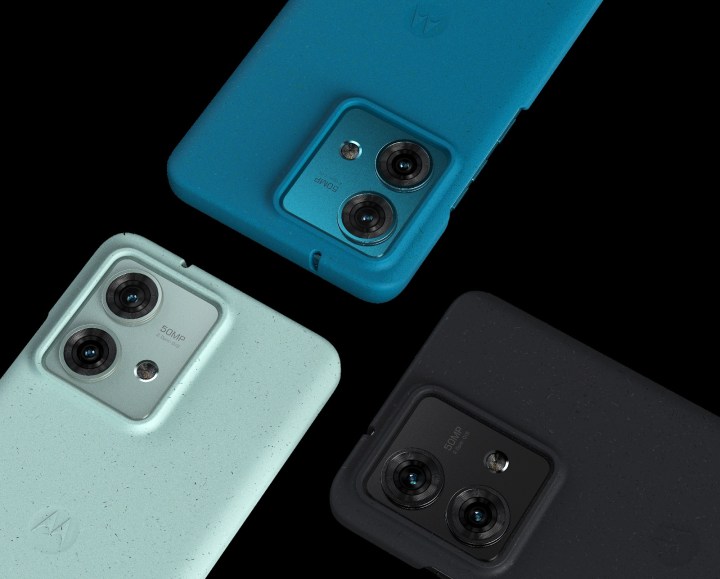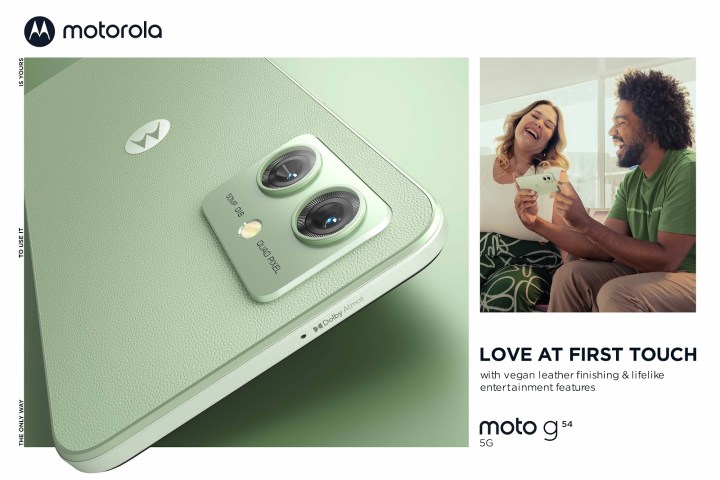
Following Apple’s recent iPhone 15 event, Motorola has launched a line of impressive new smartphones that offer sleek, modern designs at affordable prices. The Motorola Edge 40 Neo, Moto G84 5G, and Moto G54 5G are available in several markets, including the United Kingdom.
With a starting price of 300 British pounds ($375), the Motorola Edge 40 Neo is a slim device with curved edges and IP68 protection for added durability. It features a 50MP Ultra Pixel camera sensor with all-pixel focus technology, which should offer solid photo quality. The camera also provides 16x faster lowlight performance, making it perfect for nighttime photography.

The Edge 40 Neo marks Motorola’s latest offering and is the first Motorola Edge device in Europe, the Middle East, and Africa (EMEA) to use Lenovo’s CO2 Offset Services. This service offsets CO2 emissions through emission reductions during its life cycle while supporting global climate action projects.
As part of Motorola’s commitment to sustainability, the device comes with 100% plastic-free packaging featuring soy ink and 60% recycled materials, such as grayboard, kraft paper, and tracing paper. It also includes a 100% plant-based case that matches the phone’s color. The Edge 40 Neo comes in Black Beauty, Soothing Sea, and Caneel Bay colors, with all featuring a vegan leather finish in partnership with Pantone.
Equipped with a 5,000mAh battery and 68-watt TurboPower fast charging, the Motorola Edge 40 Neo offers a swift recharge, going from 0 to 50% in only 15 minutes. Its 6.55-inch pOLED display features a 144Hz refresh rate, providing an immersive viewing experience. The phone also boasts 1,300 nits peak brightness, is powered by Media Ten Dimesity 7030’s processor, and has 5G connectivity.

The Moto G84 5G distinguishes itself with a fashionable vegan leather exterior. Its camera system features a 50MP Ultra Pixel camera, an 8MP ultrawide lens with Macro Vision, and a 16MP front-facing camera with fast autofocus. The phone boasts a 6.5-inch infinity contrast pOLED display that showcases a 120Hz refresh rate and an outstanding 1,300 nits of brightness, delivering a good visual experience — especially for the price.
Powered by the Snapdragon 695 5G chipset, the Moto G84
Several EMEA markets will initially receive the Moto G84 5G at a starting price of 250 British pounds ($312).

Finally, we have the Moto G54 5G. It has a 6.5-inch FHD+ 120Hz display with stereo speakers. With a refresh rate of 120Hz and a touch rate of 240Hz, users can expect seamless performance and low latency.
The Moto G54 5G features a 50MP camera with Optical Image Stabilization (OIS) that utilizes Quad Pixel technology for 4x better lowlight sensitivity, resulting in sharper and more vibrant photos, even in dimly lit environments. The Macro Vision camera also enables users to capture fine details that standard lenses may miss. The 16MP front camera has a Face Beauty tool for automatically enhancing photos.
Powered by the MediaTek Dimensity 7020 octa-core processor and a 5,000mAh battery with TurboPower, the Moto G54 5G should have plenty of horsepower for most apps and games. The device features a premium matte finish and is available in various color options in select EMEA markets for $180 British pounds ($225). It will also be available in other markets at a later date.
The Motorola Edge 40 Neo, Moto G84 5G, and Moto G54
Editors' Recommendations
- Motorola just announced three new phones, and I need them right now
- Motorola’s new Android phone looks amazing, but there’s a catch
- A new Motorola phone just leaked, and it could beat the Galaxy S24 Ultra
- TCL’s new Android phones are coming soon, and they look promising
- If you have one of these Motorola phones, you’re getting a big Android update




